Spot Heat Exhaustion in Your Pet Before It Costs Them — and You
Heat strokes aren't just for humans. The signs of heat exhaustion in pets can be harder to spot, but just as deadly.

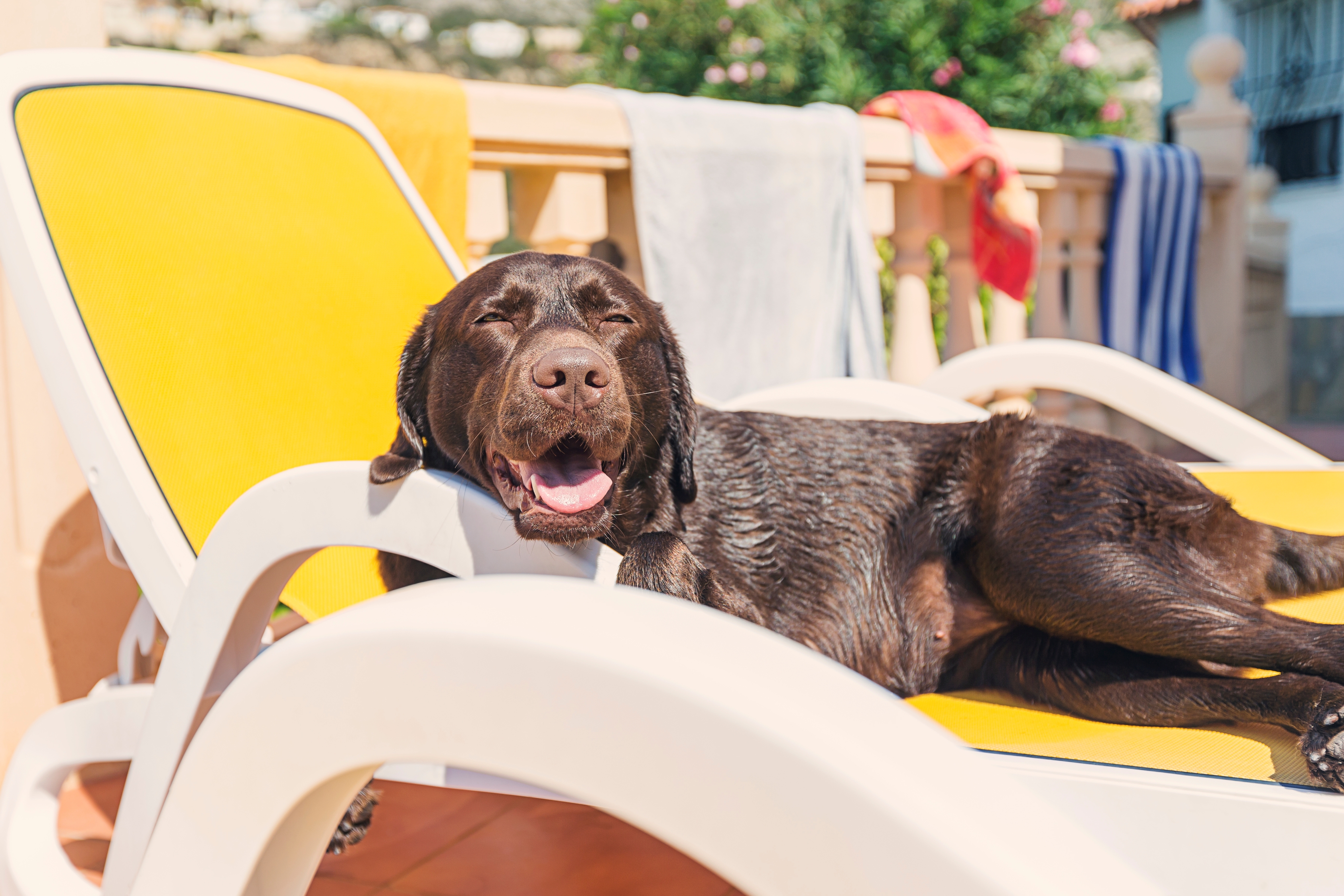
As a heat dome sets in over much of the United States this week, more than 100 million Americans will experience days of relentless heat. If you haven't already made home upgrades to survive the record-breaking heat, now is the time to do so. As you do, don't forget to think about your pets.
When temperatures rise, humans can remove layers of clothing and break a sweat to regulate their body temperatures. Our pets can't do either. Instead of sweating, dogs rely on panting to bring their internal temperature down.
Meanwhile, "cats don't sweat like humans or pant like dogs," said Dr. Liza Cahn, Veterinarian at Embrace Pet Insurance. While they have some sweat glands in their paws, they mainly rely on evaporative cooling by grooming themselves and allowing the saliva to evaporate off their fur.
From just $107.88 $24.99 for Kiplinger Personal Finance
Become a smarter, better informed investor. Subscribe from just $107.88 $24.99, plus get up to 4 Special Issues

Sign up for Kiplinger’s Free Newsletters
Profit and prosper with the best of expert advice on investing, taxes, retirement, personal finance and more - straight to your e-mail.
Profit and prosper with the best of expert advice - straight to your e-mail.
Since your dog or cat can't tell you when it's too hot, it's up to you learn the key signs of heat exhaustion in pets and the right steps to take if your furry family member is overheating.
"Heat stroke is a life-threatening emergency that affects all body systems and requires quick acting on the part of the pet owner," Dr. Cahn warned.
To keep your pet safe during the hottest days of summer, I asked vets for tips on recognizing the warning signs of overheating in pets and what pet owners should do when they spot them.
The risk of heat exhaustion in dogs and cats
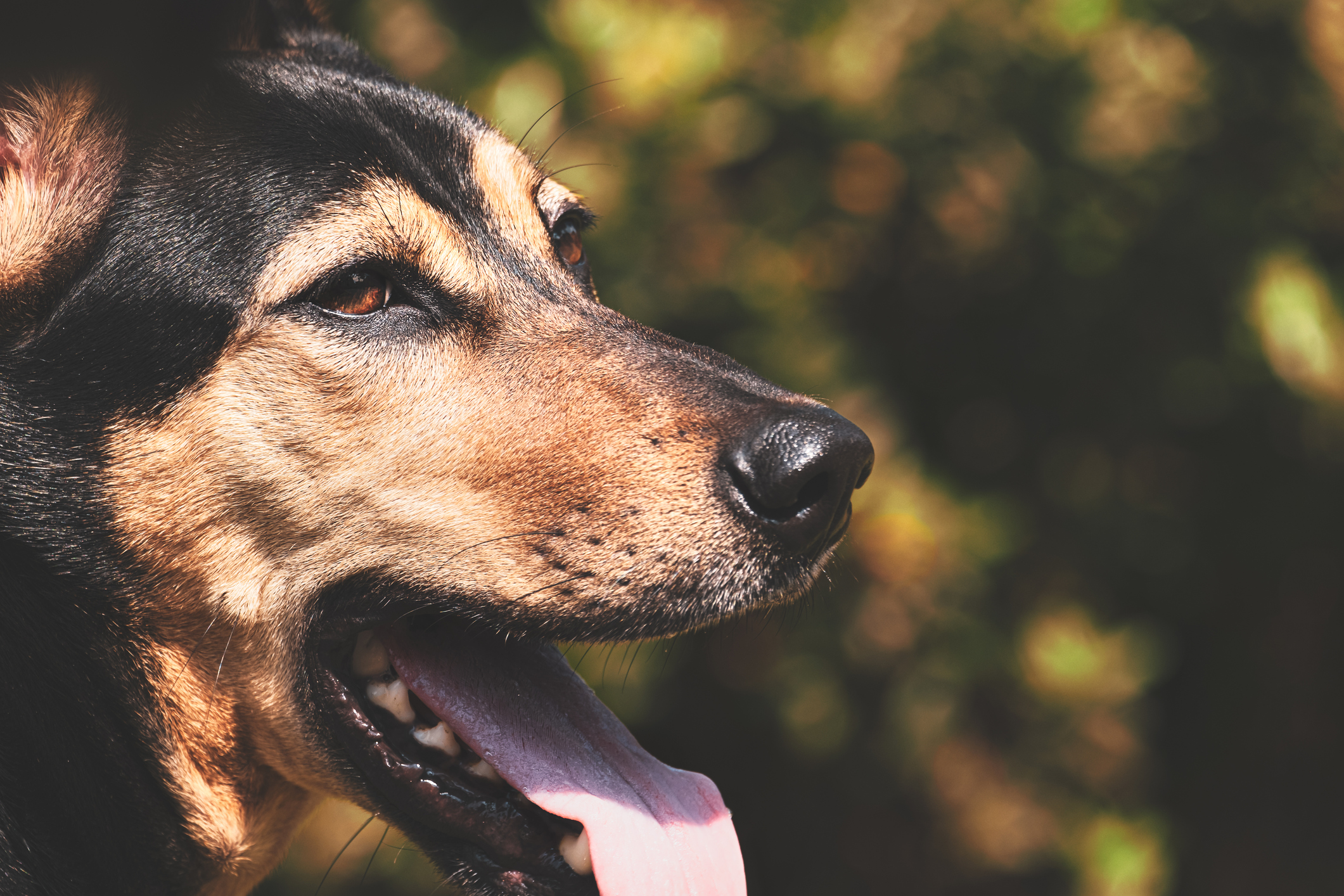
Heat-related illnesses are on the rise in both humans and animals. Worldwide, the World Health Organization estimates that 489,000 people die from heat-related causes every year, including heat strokes and underlying illnesses made worse by extreme heat.
Similar data for pets is harder to come by, but veterinarians warn that they're just as vulnerable to overheating as we are. It doesn't even need to be a particularly hot day for your pets to start overheating.
"At temperatures approaching 80 degrees, it’s wisest to play it safe and leave pets in the safety and cool of the indoors," advised Dr. Rebecca Greenstein, veterinary medical adviser for Rover.
That's especially important for higher-risk pets, which include very young or older animals and those with underlying health conditions. Dogs and cats with darker fur are also considered higher risk, as are brachycephalic breeds – flat-faced breeds like Persian cats or bulldogs.
Signs of heat exhaustion in dogs and cats
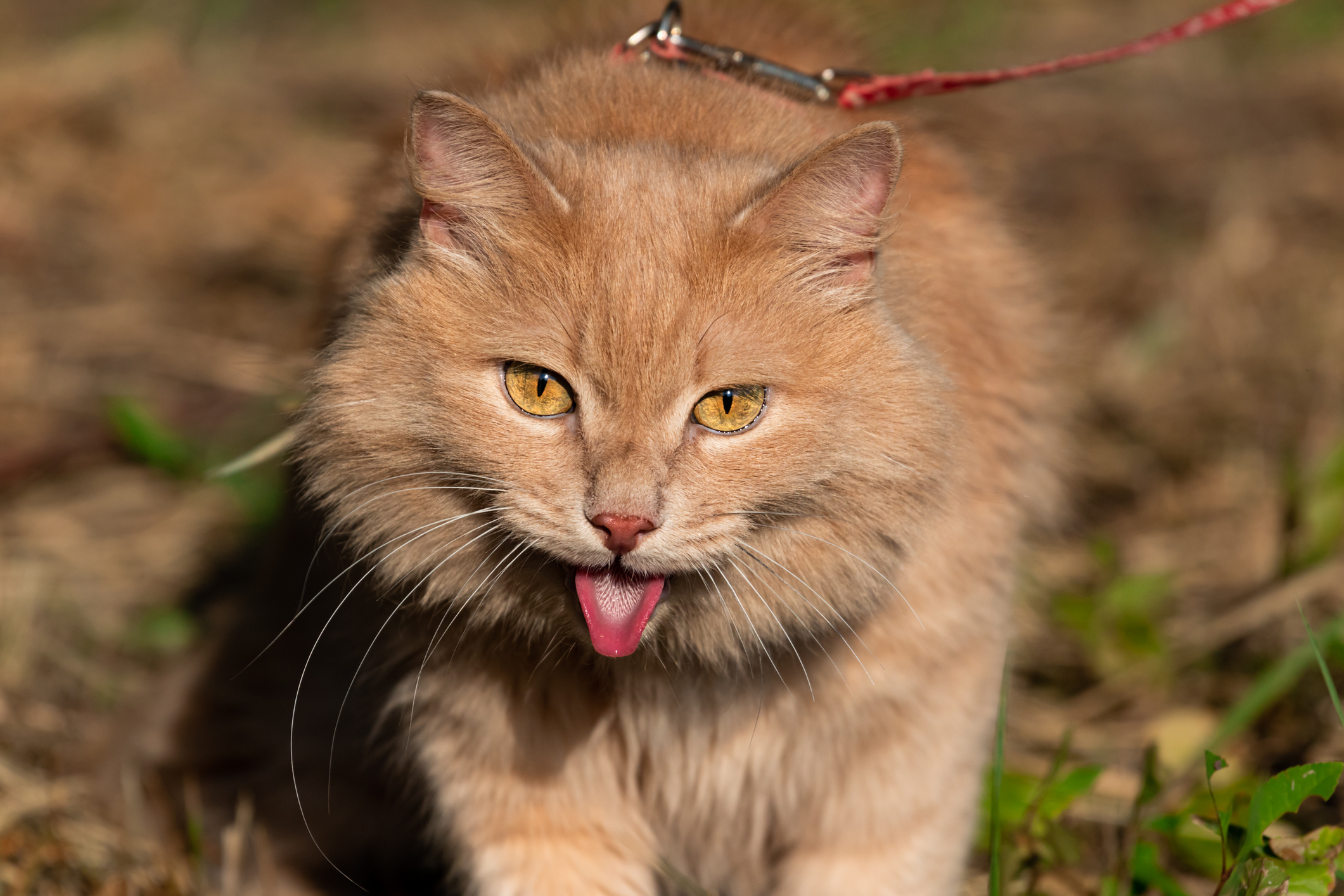
Animals aren't always easy to read and cats, in particular, are notorious for hiding their pain. It's up to pet owners to pay closer attention to their pets this summer and look for the early warning signs that they're not handling the heat well.
In dogs, you should be alert to the following signs:
- Heavy panting that doesn't stop. "Dogs cool down by panting, but if the panting is fast, shallow, and doesn’t ease up, even in the shade or after water, it could be a sign of heatstroke," said Dr. Alex MacLean, Emergency Veterinarian, VEG ER for Pets in Mount Pleasant, SC.
- Behaving lethargic or collapsing.
- Gums that are bright red or pale. "Healthy gums are typically bubblegum pink," Dr. MacLean explained. If they're noticeably darker or paler, it could be a warning sign that they're going into shock.
- Excessive drooling, especially if the drool is thick, foamy or sticky.
- Behaving disoriented or confused.
- A rapid heart rate, even when your dog is at rest.
- Vomiting or diarrhea, especially when combined with other symptoms on this list.
- Labored or noisy breathing.
In cats, many of the signs of overheating overlap with those you'll see in dogs, like panting or drooling. But, according to Dr. Cahn, you should also watch for signs of restlessness or excessive grooming.
Remember, one way cats cool down is by licking their fur and allowing the saliva to evaporate. In more severe cases, cats may also seem disoriented or weak, experience seizures or collapse.
Another notable difference between cats and dogs is when panting occurs. For dogs, panting is often one of the first signs of heat stress as they use this to try to cool themselves down. Cats, however, usually don't start panting until the overheating is more serious.
Apple AirTags aren't just for your luggage. You can slip one into an AirTag-compatible collar for your pet to track them down if they get disoriented from the heat.
Cool first, vet second: What to do if your pet has heat exhaustion
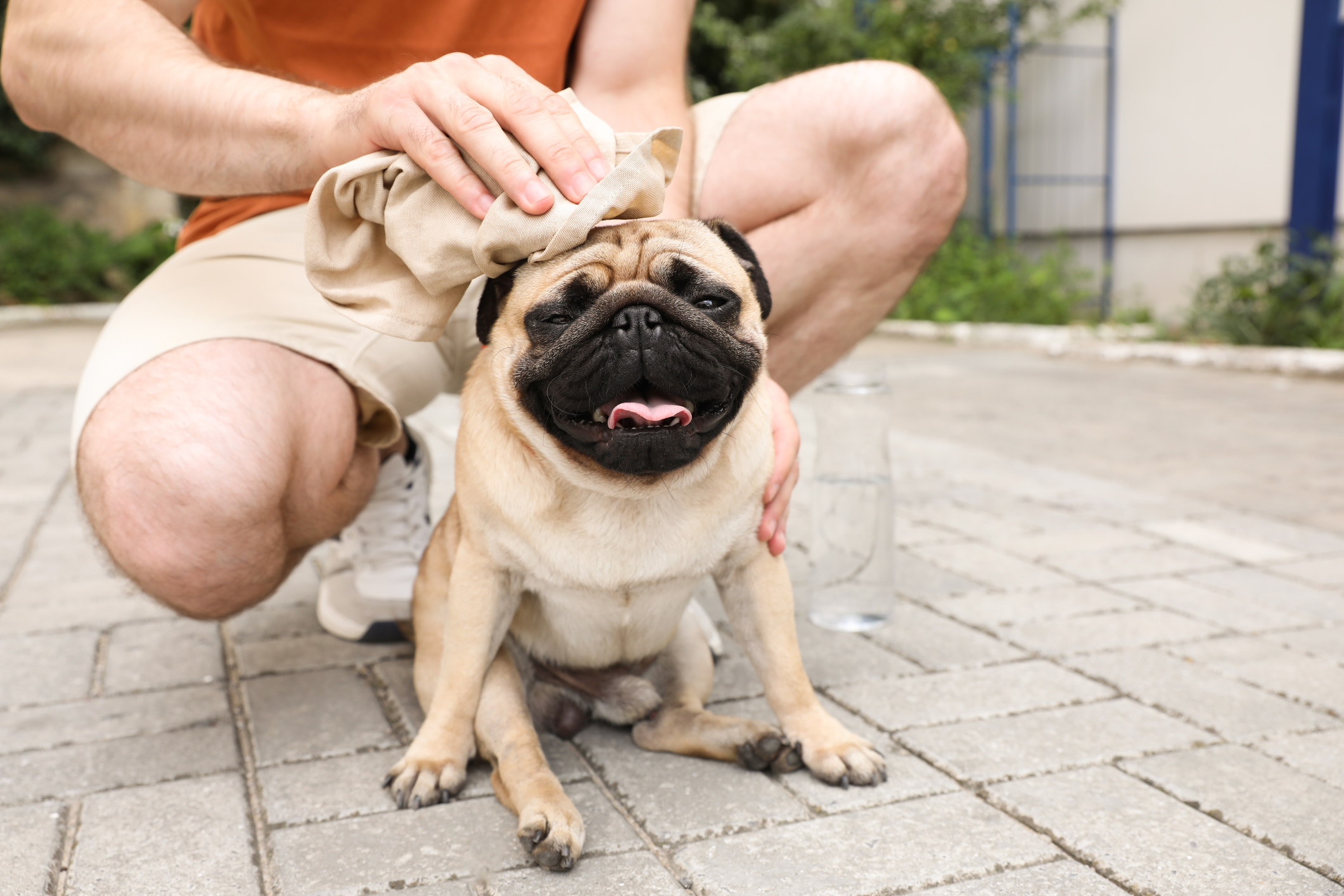
If you spot the signs or even suspect heat stress in your pet, the first step is to start cooling them down – even before calling your vet or taking them to your nearest emergency clinic.
"Immediately move them to a cool location and offer water," Dr. Cahn recommended.
Other tips from Dr. Cahn and Dr. Greenstein to help your cat or dog cool down safely include:
- If at home, bring them inside and place them in front of a fan or near an air conditioner vent. If outside, bring them to your car and turn on the AC. If that's not an option, find the coolest, shadiest spot you can.
- Apply cool, damp towels to their fur, paying special attention to armpits, ears, paws and the groin area. Alternatively, you can mist these areas with cool water. But, be sure to avoid the face as your pet may already be struggling to breathe.
- If possible, place your pet in a bath or shower with tepid water. It should be cooler than your pet, but not ice cold. If you're outside, hosing them down or pouring water from your water bottle on them may be an option.
- Keep drinking water available and offer sips, but don't force them to drink.
- Don't use ice or ice-cold water. "A lot of people mistakenly rush to try to home-treat heatstroke with ice cubes and freezing water. Overcooling pets with hyperthermia can actually backfire and cause shock," Dr. Greenstein said.
- Check their temperature regularly if you can and stop these cooling measures once the thermometer reads 103 degrees Fahrenheit. While that's still high, even for cats, experts recommend stopping here and allowing the pet's own temperature regulation mechanisms to kick in. According to the Red Cross, that's because you risk your pet's body temperature plummeting too quickly if you keep cooling them after this point.
Once you've taken steps to start cooling your pet off, call your vet. It's not always easy to recognize the more serious signs of heat stroke, but your vet can advise you on whether you should bring your furry friend in for medical treatment.
"At the vet, treatment focuses on continuing to safely lower body temperature, support organ function, manage symptoms, and prevent complications," said Dr. Cahn. "This may involve IV fluids, oxygen therapy, and medications."
Is heat exhaustion covered by pet insurance?
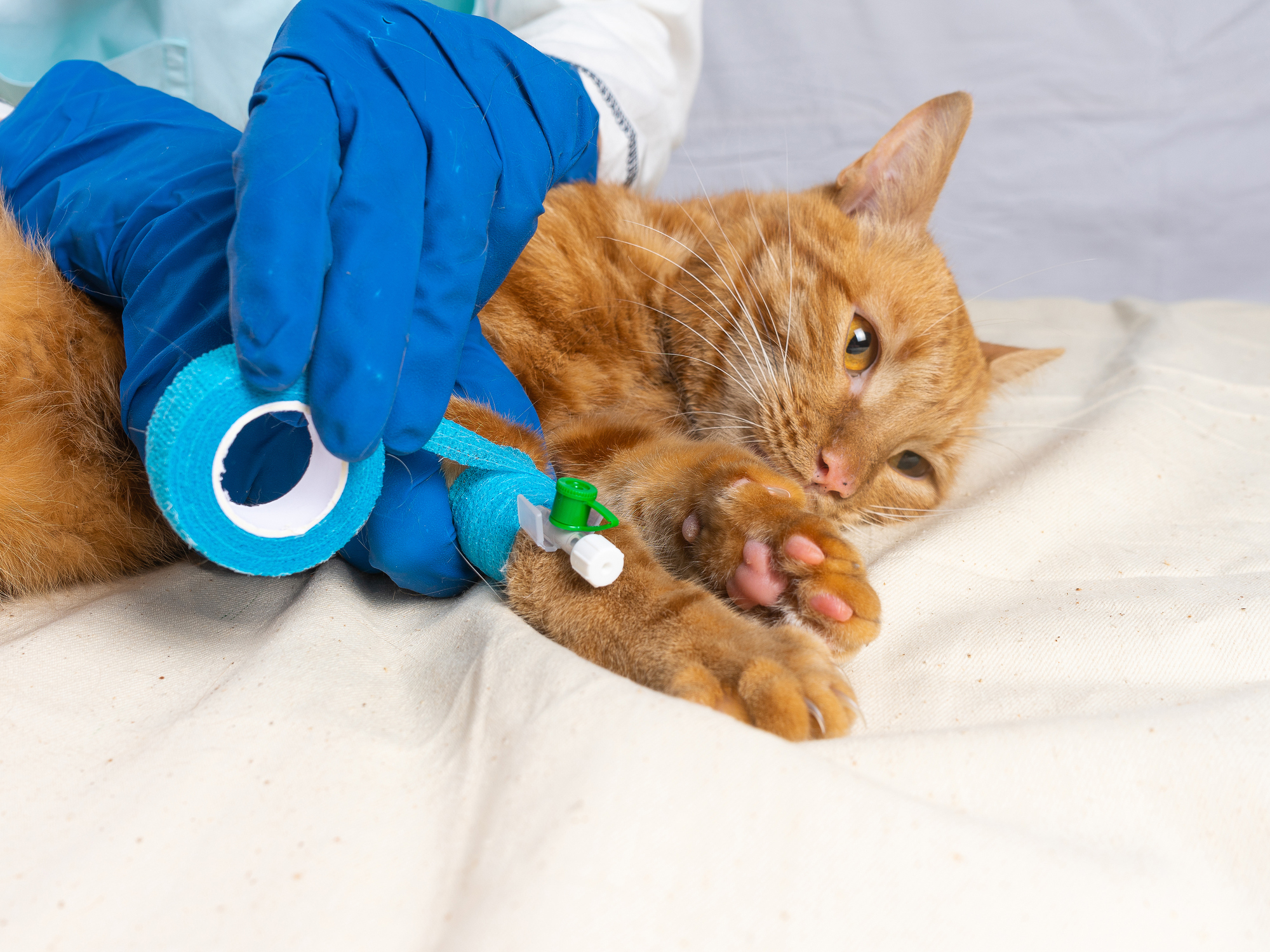
Yes, heat strokes and other heat-related issues are typically considered accidental injuries by most pet insurance policies. That means even an affordable pet insurance policy with accident-only coverage would reimburse those vet bills if you need to bring your overheating dog or cat in for treatment this summer. But you'll want to double check the details of your policy now to make sure.
If you don't already have pet insurance, now's the time to shop around for a policy because it can truly be a life (and wallet) saver in the event of an emergency like heat exhaustion. According to Lemonade, a visit to the ER for your pet can easily cost hundreds of dollars.
The initial exam and testing alone can cost $200 or more while your bill can end up well over $600 if they need to stay overnight for treatment and observation. That's not including the cost of the treatments used to manage symptoms. IV fluids typically cost $75 to $121 for a single bag of fluid, according to Care Credit. Meanwhile, oxygen therapy averages over $280.
Keep in mind, those numbers are national averages across multiple states, multiple breeds and multiple species. The exact cost to save your furry friend will vary depending on the age, breed, health status and treatment needed (as well as where you're located).
Compare multiple quotes on pet insurance at The Zebra to find the right plan and price for your pet.
Heat safety tips to protect your pets this summer
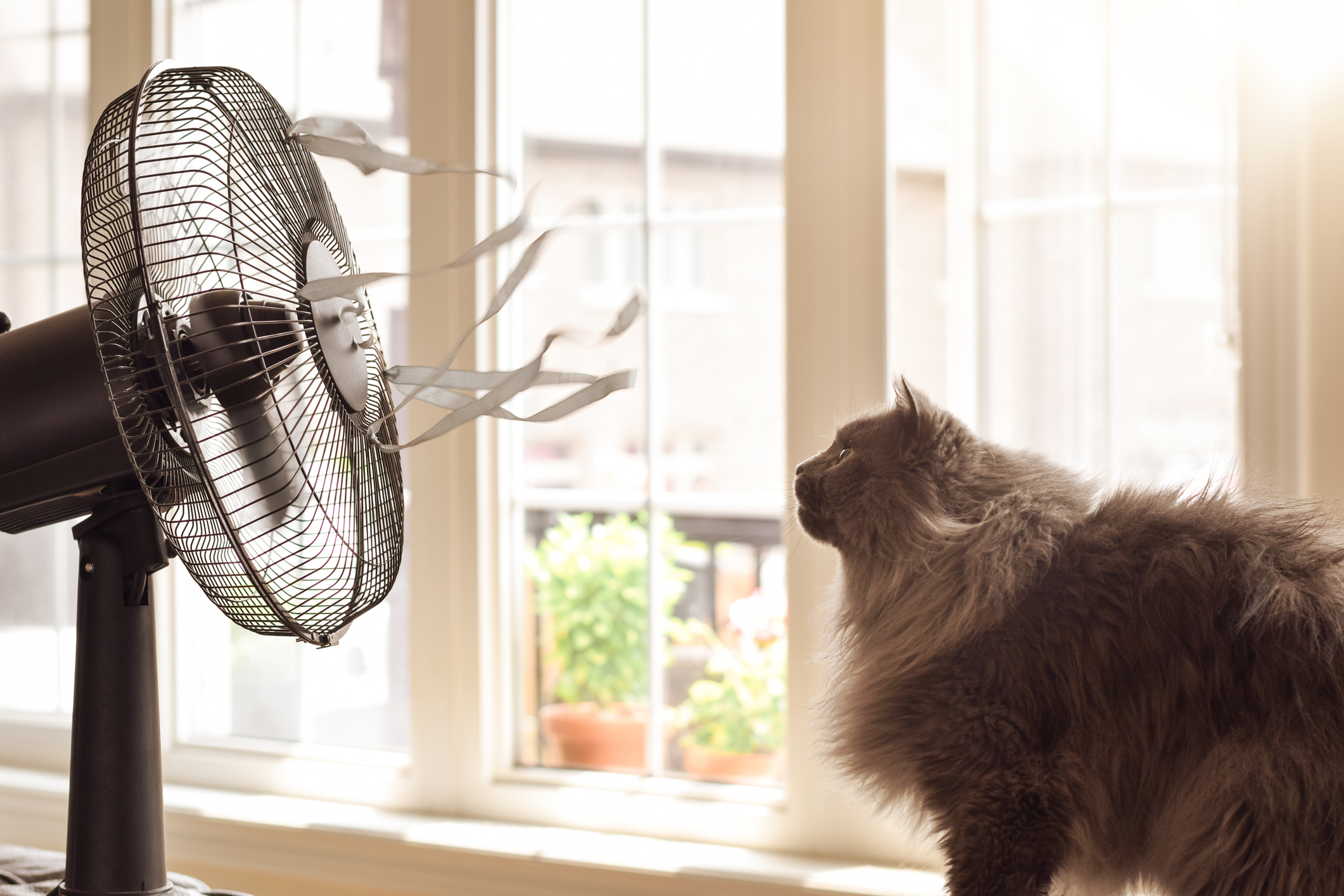
No matter how hot your summers get, you can prevent heat stroke and keep your pets safe by following a few simple guidelines. "On a sweltering day, I’d advise all pet parents to use common sense and play it safe," said Dr. Greenstein.
That means:
- Keep pets indoors where it's cooler, even if they're begging to go outside.
- Avoid walks or outdoor activities during the hottest parts of the day. That may mean switching up your routine to early morning or late evening walks to avoid the midday sun.
- Shorten your walks and avoid overly strenuous exercise or prolonged outdoor playtime.
- When you do go out, bring extra water and a mister or portable fan to use if you start to notice your pet struggling in the heat.
- Stick to areas where you know you'll have quick access to cool rest areas if needed. For example, you might shorten your normal walking route to make sure you're always close enough to take them home at the first sign of heat stress.
- Feel the pavement with your hand before taking your pet out for a walk. If it hurts the palm of your hand, it'll hurt their paws.
- Add ice cubes to water bowls to keep it cool.
- If you leave the house, don't turn your air conditioning completely off. Instead, set it to around 75 to 78 degrees. If you don't have air conditioning, open screened windows, leave fans running or do whatever else you do stay cool without air conditioning so your pets don't overheat while you're away.
- Never leave your pet in a hot, unventilated area like a hot car or sun room. Heat deaths can occur in as little as 15 minutes in these conditions.
Related content
Profit and prosper with the best of Kiplinger's advice on investing, taxes, retirement, personal finance and much more. Delivered daily. Enter your email in the box and click Sign Me Up.

Rachael Green is a personal finance eCommerce writer specializing in insurance, travel, and credit cards. Before joining Kiplinger in 2025, she wrote blogs and whitepapers for financial advisors and reported on everything from the latest business news and investing trends to the best shopping deals. Her bylines have appeared in Benzinga, CBS News, Travel + Leisure, Bustle, and numerous other publications. A former digital nomad, Rachael lived in Lund, Vienna, and New York before settling down in Atlanta. She’s eager to share her tips for finding the best travel deals and navigating the logistics of managing money while living abroad. When she’s not researching the latest insurance trends or sharing the best credit card reward hacks, Rachael can be found traveling or working in her garden.
-
 Forget FIRE: Why ‘FILE’ Is the Smarter Move for Child-Free DINKs
Forget FIRE: Why ‘FILE’ Is the Smarter Move for Child-Free DINKsHow shifting from "Retiring Early" to "Living Early" allows child-free adults to enjoy their wealth while they’re still young enough to use it.
-
 7 Tax Blunders to Avoid in Your First Year of Retirement
7 Tax Blunders to Avoid in Your First Year of RetirementA business-as-usual approach to taxes in the first year of retirement can lead to silly trip-ups that erode your nest egg. Here are seven common goofs to avoid.
-
 How to Plan for Social Security in 2026's Changing Landscape
How to Plan for Social Security in 2026's Changing LandscapeNot understanding how the upcoming changes in 2026 might affect you could put your financial security in retirement at risk. This is what you need to know.
-
 My First $1 Million: Semiretired CPA, 68, San Francisco
My First $1 Million: Semiretired CPA, 68, San FranciscoEver wonder how someone who's made a million dollars or more did it? Kiplinger's My First $1 Million series uncovers the answers.
-
 I'm a Wealth Adviser: These Are the 7 Risks Your Retirement Plan Should Address
I'm a Wealth Adviser: These Are the 7 Risks Your Retirement Plan Should AddressYour retirement needs to be able to withstand several major threats, including inflation, longevity, long-term care costs, market swings and more.
-
 Tip: Ways to Track Your Credit Card Rewards
Tip: Ways to Track Your Credit Card RewardsHere are the best strategies and apps to help you stay current with your credit card rewards.
-
 Do You Have an Insurance Coverage Gap for Your Valuables? You May Be Surprised to Learn You Do
Do You Have an Insurance Coverage Gap for Your Valuables? You May Be Surprised to Learn You DoStandard homeowners insurance usually has strict limits on high-value items, so you should formally "schedule" these valuable possessions with your insurer.
-
 How We Manage Our Finances Together as a Married Couple
How We Manage Our Finances Together as a Married CoupleDouglas Boneparth, a certified financial planner, and his wife, Heather Boneparth, speak with Kiplinger about couples managing finances.
-
 How AI Is Changing the Way Americans Spend on Live Events
How AI Is Changing the Way Americans Spend on Live EventsAI bots are reshaping ticket prices, resale markets and how fans shop. Here's what it means for your wallet and how to get the best deals on concerts, sports and shows.
-
 What Bilt Cardholders Need to Know as Wells Fargo Exits the Program
What Bilt Cardholders Need to Know as Wells Fargo Exits the ProgramA major shake-up in the Bilt Rewards program could affect your credit card, rent rewards and points strategy heading into 2026.
-
 Where to Stash Cash as Yields Fall, According to Advisers
Where to Stash Cash as Yields Fall, According to AdvisersYour best options depend on how soon you'll need the money and your tolerance for risk.

